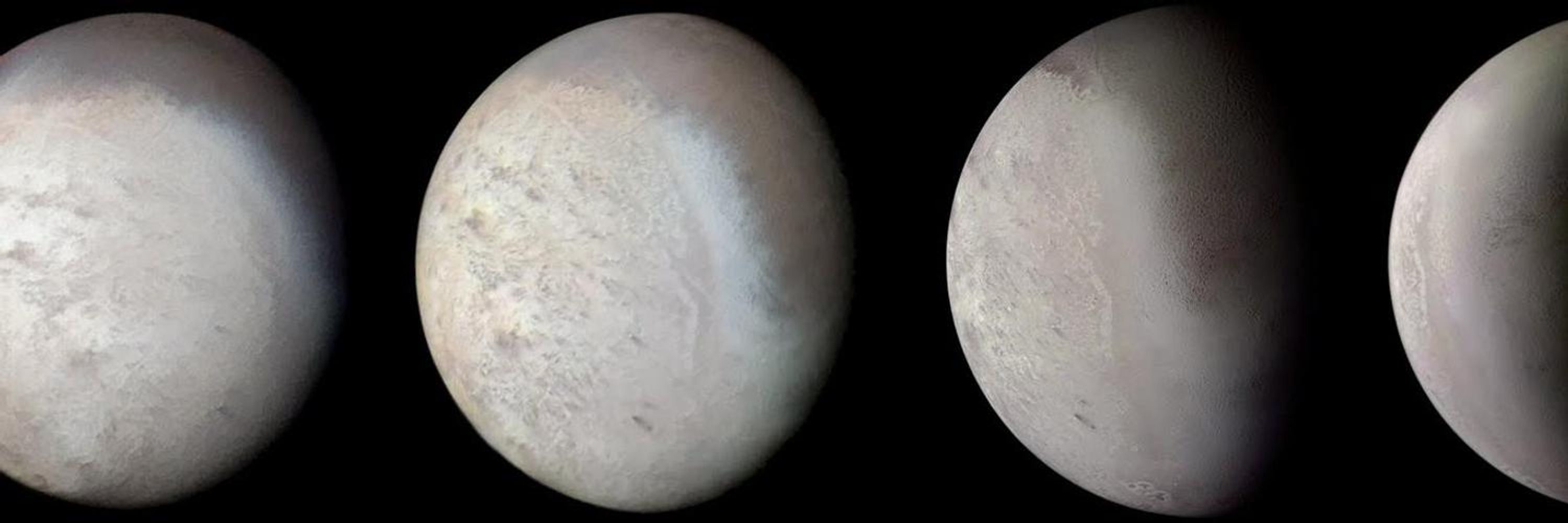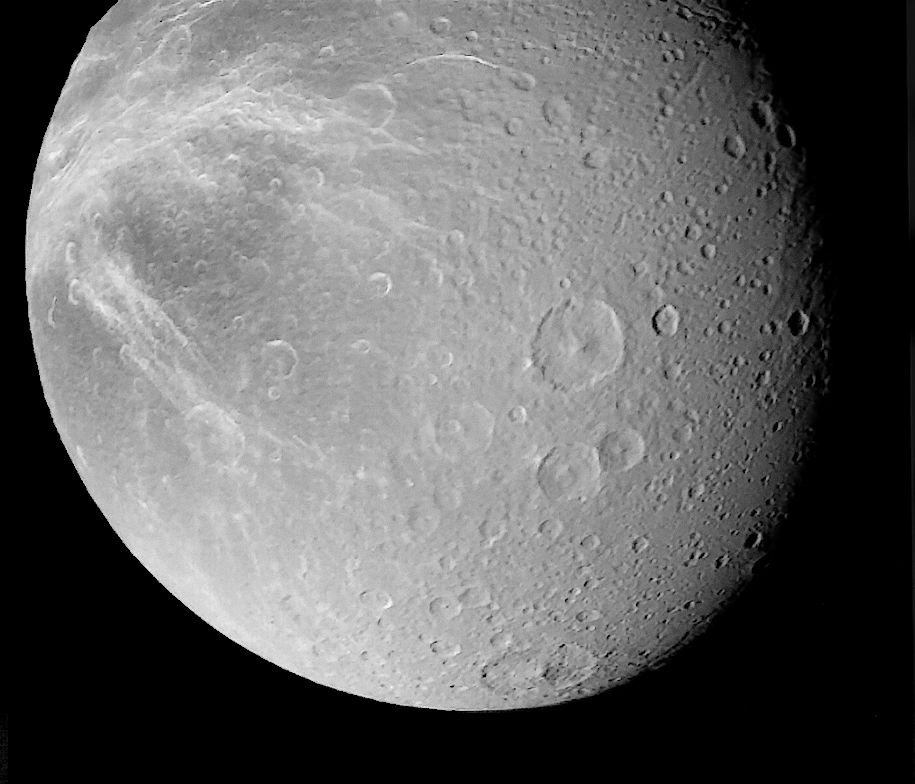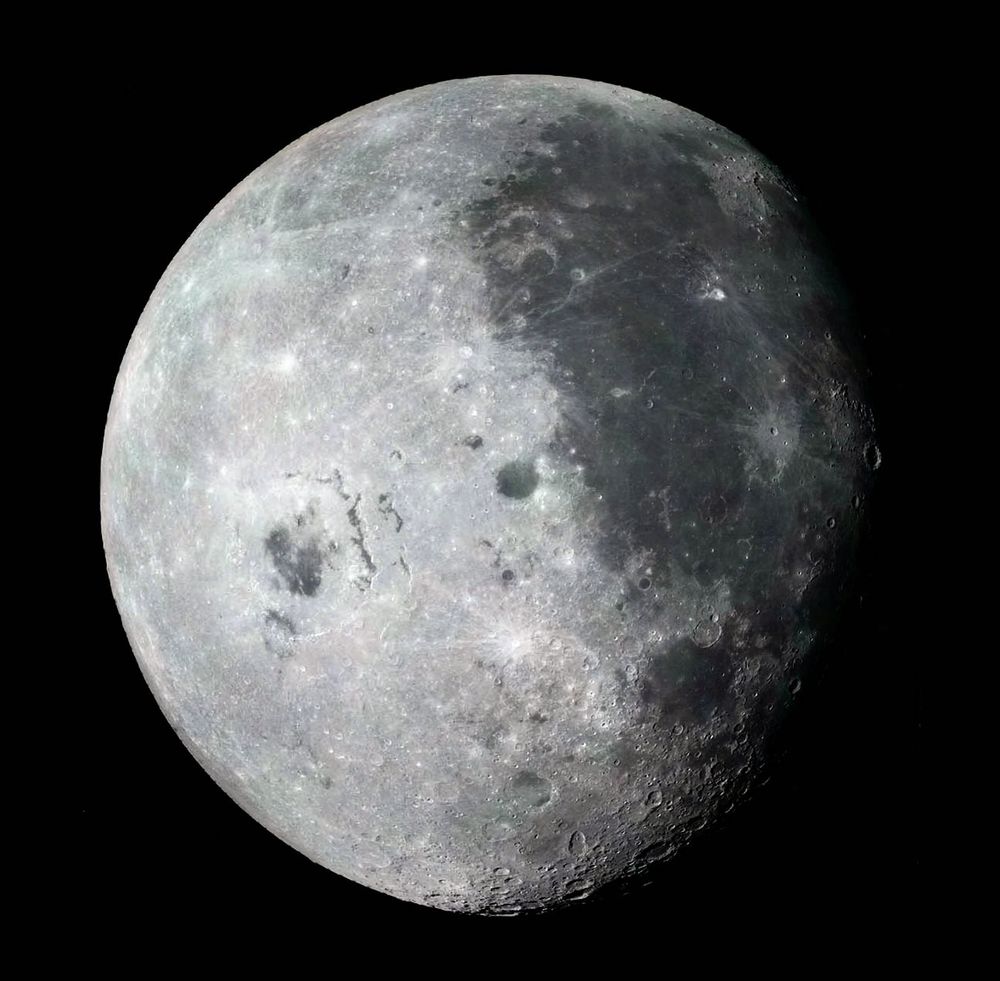
Ted Stryk
@tedstryk.bsky.social
Interplanetary Dumpster Diver. Asteroid (230728) Tedstryk
Images I post are Copyright Ted Stryk (processed or taken by me) unless otherwise noted. Professor at Roane State CC in Oak Ridge, TN
Images I post are Copyright Ted Stryk (processed or taken by me) unless otherwise noted. Professor at Roane State CC in Oak Ridge, TN
My view is this: I think the deal stinks. Now, if it passes and they successful protect ACA subsidies in December, then I'll gladly admit I was wrong. If they don't, then I think that there is not real point in supporting except for trying to replace it from the inside. They're just a useful foil.
November 10, 2025 at 11:50 AM
My view is this: I think the deal stinks. Now, if it passes and they successful protect ACA subsidies in December, then I'll gladly admit I was wrong. If they don't, then I think that there is not real point in supporting except for trying to replace it from the inside. They're just a useful foil.
The north polar region of Enceladus from Voyager 2 on August 25, 1981. Voyager 2 was unlucky enough to get its best views of the least active parts of this moon.

November 6, 2025 at 12:01 PM
The north polar region of Enceladus from Voyager 2 on August 25, 1981. Voyager 2 was unlucky enough to get its best views of the least active parts of this moon.
Reposted by Ted Stryk
Tianwen-1 Mars orbiter successfully observed the interstellar object 3I/ATLAS in early October at a distance of ~29 million km, CNSA has just announced. www.cnsa.gov.cn/n6758823/n67...
November 6, 2025 at 12:42 AM
Tianwen-1 Mars orbiter successfully observed the interstellar object 3I/ATLAS in early October at a distance of ~29 million km, CNSA has just announced. www.cnsa.gov.cn/n6758823/n67...
Europa, moon of Jupiter, from the Galileo orbiter on November 25th, 1999.

November 5, 2025 at 12:54 AM
Europa, moon of Jupiter, from the Galileo orbiter on November 25th, 1999.
Baseball has made it to November 2nd.
November 2, 2025 at 4:02 AM
Baseball has made it to November 2nd.
Another closeup of Saturn from Voyager 2 on August 21, 1981. This one shows a closer view of one of an eddy.

November 1, 2025 at 11:34 PM
Another closeup of Saturn from Voyager 2 on August 21, 1981. This one shows a closer view of one of an eddy.
LOL, I was thinking Voyager 2. But I accidentally wrote Voyager 1. An edit feature would be nice.
November 1, 2025 at 10:53 PM
LOL, I was thinking Voyager 2. But I accidentally wrote Voyager 1. An edit feature would be nice.
The clouds of Saturn on August 21, 1981, from Voyager 1

November 1, 2025 at 4:42 PM
The clouds of Saturn on August 21, 1981, from Voyager 1
The jagged boulders behind the Viking 2 lander, seen in 1977. No lander will likely ever have to land with the limited data on the nature of the surface that the Vikings had to deal with, and Viking 2 was really lucky to touch down here safely.

October 20, 2025 at 11:00 PM
The jagged boulders behind the Viking 2 lander, seen in 1977. No lander will likely ever have to land with the limited data on the nature of the surface that the Vikings had to deal with, and Viking 2 was really lucky to touch down here safely.
The map of "Luna Incognita," the sliver of the moon near the south pole missed by the missions of the 1960s and 70s, produced by the Association of Lunar and Planetary observers around 1990, which combined spacecraft and telescopic images. I was involved in the the final verification phase of it.




October 13, 2025 at 12:55 AM
The map of "Luna Incognita," the sliver of the moon near the south pole missed by the missions of the 1960s and 70s, produced by the Association of Lunar and Planetary observers around 1990, which combined spacecraft and telescopic images. I was involved in the the final verification phase of it.
Ganymede, moon of Jupiter, from Voyager 2 on July 9, 1979. The edge of the polar frost can be seen in the upper right.

October 5, 2025 at 4:25 PM
Ganymede, moon of Jupiter, from Voyager 2 on July 9, 1979. The edge of the polar frost can be seen in the upper right.
Dione, moon of Saturn, from Voyager 1 on November 12, 1980. This photomosaic represents the highest resolution view of Dione from the Voyagers.

October 1, 2025 at 11:00 AM
Dione, moon of Saturn, from Voyager 1 on November 12, 1980. This photomosaic represents the highest resolution view of Dione from the Voyagers.
Reposted by Ted Stryk
My new color photographic map of Pluto is now online.
Full resolution image version (~322Mpix) is available on Flickr www.flickr.com/photos/10958...
PDF version (~73MB) is available here: drive.google.com/file/d/1EW-x...
🧵 1/5
Full resolution image version (~322Mpix) is available on Flickr www.flickr.com/photos/10958...
PDF version (~73MB) is available here: drive.google.com/file/d/1EW-x...
🧵 1/5

October 1, 2025 at 3:43 AM
My new color photographic map of Pluto is now online.
Full resolution image version (~322Mpix) is available on Flickr www.flickr.com/photos/10958...
PDF version (~73MB) is available here: drive.google.com/file/d/1EW-x...
🧵 1/5
Full resolution image version (~322Mpix) is available on Flickr www.flickr.com/photos/10958...
PDF version (~73MB) is available here: drive.google.com/file/d/1EW-x...
🧵 1/5
Dione, moon of Saturn, from Voyager 2 on August 22, 1981.

September 30, 2025 at 10:50 AM
Dione, moon of Saturn, from Voyager 2 on August 22, 1981.
Dione, moon of Saturn, from Voyager 1 on November 12, 1980. The wispy trailing hemisphere can be seen on the left-hand side.

September 29, 2025 at 9:57 PM
Dione, moon of Saturn, from Voyager 1 on November 12, 1980. The wispy trailing hemisphere can be seen on the left-hand side.
Europa, moon of Jupiter, from Galileo on its 17th orbit of Jupiter in September 1998.

September 24, 2025 at 12:21 PM
Europa, moon of Jupiter, from Galileo on its 17th orbit of Jupiter in September 1998.
Saturn from the Hubble Space Telescope in June of 2018. The color data used here extends from near UV to near IR, which is why the intensity of the features on the Saturnian disk seems more pronounced.

September 23, 2025 at 6:34 PM
Saturn from the Hubble Space Telescope in June of 2018. The color data used here extends from near UV to near IR, which is why the intensity of the features on the Saturnian disk seems more pronounced.
Reposted by Ted Stryk
Actuellement deux comètes présentes dans notre système solaire semblent se tirer la bourre. Leur nom de code : C/2025 K1 ATLAS (à gauche) et C/2025 R2 SWAN (à droite). En réalité leurs trajectoires respectives sont très différentes.
Reunion Island - 20 septembre 2025.
Reunion Island - 20 septembre 2025.

September 22, 2025 at 8:32 AM
Actuellement deux comètes présentes dans notre système solaire semblent se tirer la bourre. Leur nom de code : C/2025 K1 ATLAS (à gauche) et C/2025 R2 SWAN (à droite). En réalité leurs trajectoires respectives sont très différentes.
Reunion Island - 20 septembre 2025.
Reunion Island - 20 septembre 2025.
Saturn, rings, and moons on August 30-31, 1979, from Pioneer 11 as it approached the planet. This was produced using images over a two and half hour period that spanned from just about midnight on August 30th into the wee hours of August 31.

September 21, 2025 at 4:57 PM
Saturn, rings, and moons on August 30-31, 1979, from Pioneer 11 as it approached the planet. This was produced using images over a two and half hour period that spanned from just about midnight on August 30th into the wee hours of August 31.
A more distant shot of Io, moon of Jupiter, showing Loki Patera, the dark feature in the upper center, from Juno as it receded from Io on December 30th, 2023.

September 18, 2025 at 10:11 PM
A more distant shot of Io, moon of Jupiter, showing Loki Patera, the dark feature in the upper center, from Juno as it receded from Io on December 30th, 2023.
Io, moon of Jupiter, from Juno on December 30, 2023.

September 18, 2025 at 1:06 AM
Io, moon of Jupiter, from Juno on December 30, 2023.
The moon from the Galileo spacecraft during its flyby in December, 1992. The quality of the images it returned really shows what could have been had its antenna opened (it could send back images at a high rate with its omnidirectional antenna near earth, but not from Jupiter).

September 17, 2025 at 12:42 AM
The moon from the Galileo spacecraft during its flyby in December, 1992. The quality of the images it returned really shows what could have been had its antenna opened (it could send back images at a high rate with its omnidirectional antenna near earth, but not from Jupiter).
Another film image of the moon from Zond 8 on October 24, 1970.

September 16, 2025 at 10:26 PM
Another film image of the moon from Zond 8 on October 24, 1970.
The earth and moon from Zond 8 on October 24, 1970. This image was taken on film that was returned to earth.

September 16, 2025 at 10:47 AM
The earth and moon from Zond 8 on October 24, 1970. This image was taken on film that was returned to earth.
Europa from the Galileo spacecraft in June of 1997. The hemispheric differences in color are quite apparent when one compares the left and right sides of this image.

September 15, 2025 at 11:28 PM
Europa from the Galileo spacecraft in June of 1997. The hemispheric differences in color are quite apparent when one compares the left and right sides of this image.

